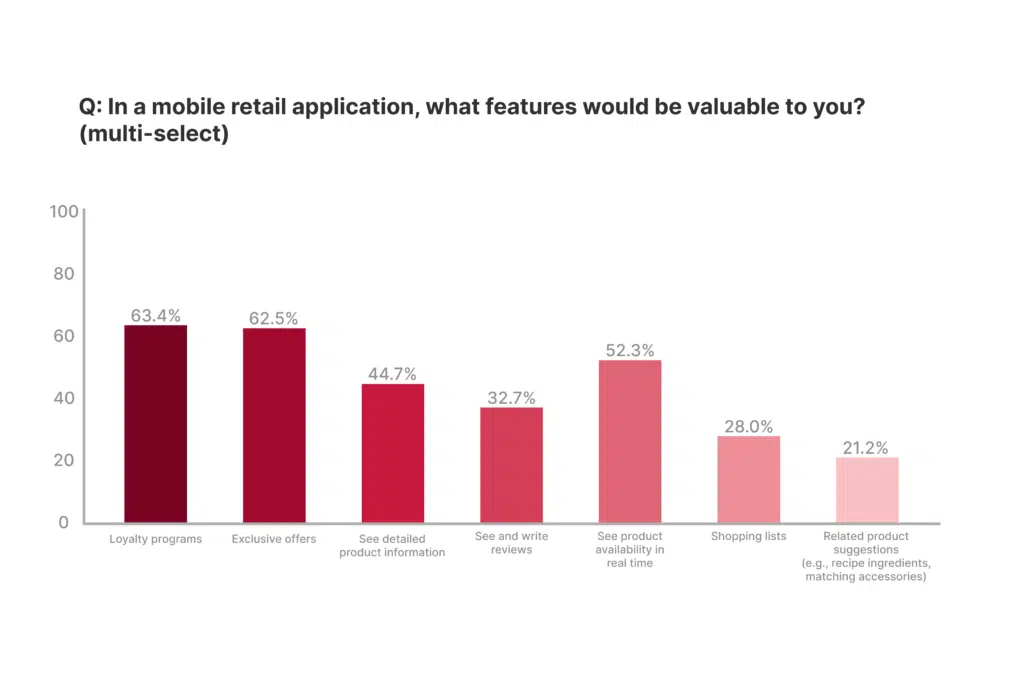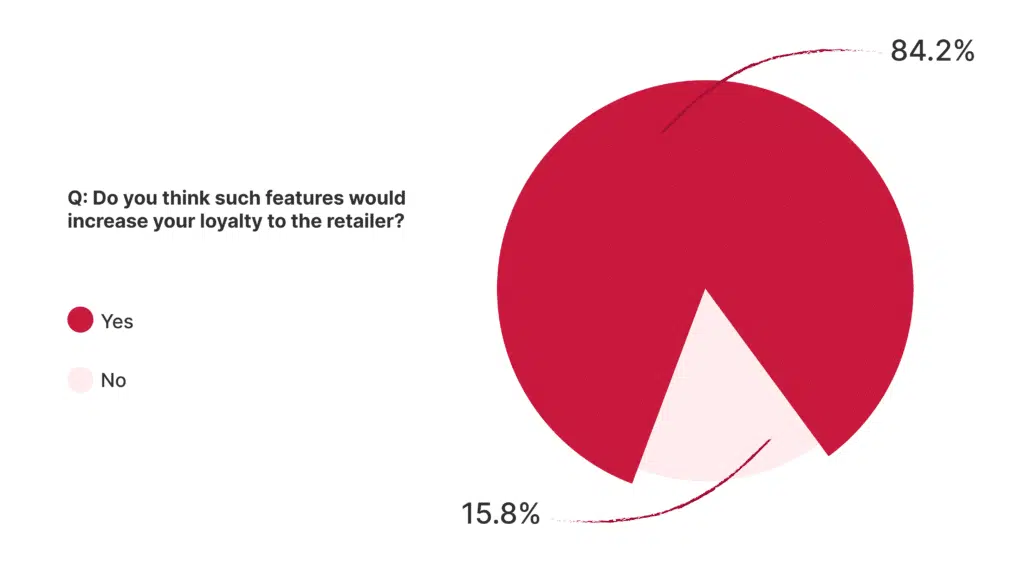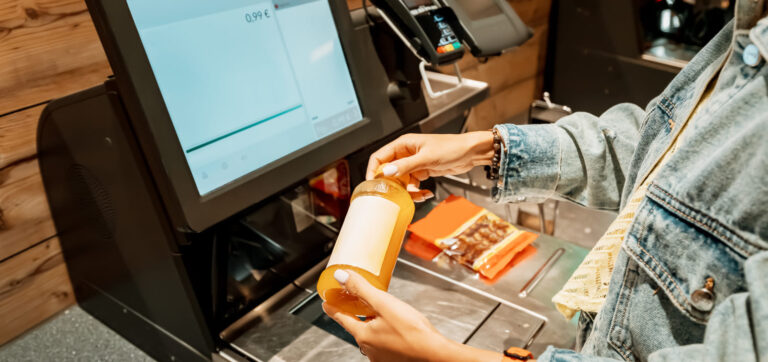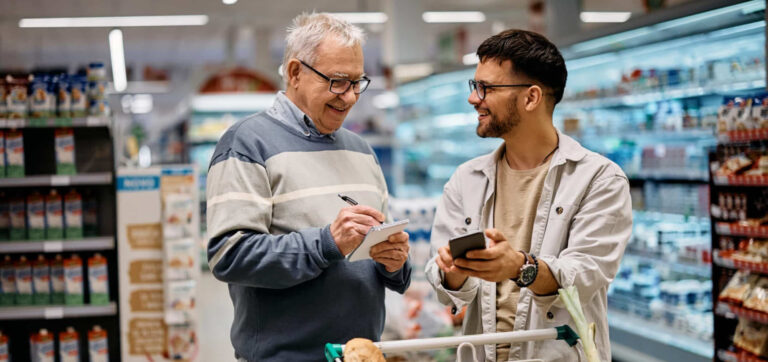In 2023, we asked 1,000 American consumers about their preferences concerning online and offline shopping, multichannel retail, and self-checkout technology. The results showed that participants were not only open to the idea of self-checkout (40.6% had already tried it and 41.8% wanted to) but also to new ways of enabling self-checkout, e.g., a Scan & Go app.
When asked about the main benefit of Scan & Go, 55.3% responded with not having to wait in line. This suggests there’s still a need for faster checkouts, and that technology needs to evolve to make that happen.
4 common problems with self-checkout and how to solve them
There are several major hurdles self-checkout faces, including the cost, the lacking user-friendliness, and general resistance to the idea of replacing humans with machines. Solutions exist – but have yet to be implemented widely.
1. Self-checkout technology is too expensive to install and maintain
At first glance, self-checkout stations may look like a good option to reduce labor costs. But not only do they require a high initial investment, their hardware and software also need regular maintenance. This means that if customers don’t accept them, self-checkout stations quickly become a financial liability.
Scan & Go solves this problem by leveraging existing hardware: customers’ smartphones. This only leaves the costs of integrating and maintaining the mobile app’s scanning and checkout functionalities. Since many retailers already offer a customer app, the overall budget impact is slight.
2. Customers think it’s about cutting costs, not improving the shopping experience
Key to customers’ aversion towards traditional self-checkout systems is the feeling that retail stores are just trying to offload work onto them. After all, the general process remains the same: Customers first need to gather all items they’d like to buy and then have to check them out all at once.
In contrast, Scan & Go offers them more flexibility: Customers can scan each product as they take it off the shelf. If they decide to put it back, they just delete it from the list. When they have everything they need, they just pay in the app and leave the store. They don’t have to take all of their items from the shopping cart just to scan them and then put them back again. Because of this additional comfort, customers are much more likely to adopt the new technology.
3. Self-checkout stations displace regular checkout registers
Traditional self-checkout counters require a lot of space in an environment where every square inch counts. Thus, they often replace checkout lanes – which means longer waiting times for customers who prefer the traditional checkout experience.
Self-checkout using a mobile app requires zero floor space and doesn’t impact existing checkout infrastructure. It simply gives customers more options, making it a low-risk solution to implement.
4. Scanning product barcodes is too difficult
Stationary barcode scanners are hard to use: Pointing small product barcodes correctly at fixed laser scanners is no easy task. This can frustrate the customer and nullify any time savings they might have gained by opting for self-checkout.
In contrast, many people are already used to scanning barcodes with smartphones. When scanning a code on the packaging, they can move and rotate the product or their device as needed and receive immediate visual feedback when the scan succeeds. Or they instead scan the shelf barcode, which is big and easy to find.
Scan & Go apps also let customers view their cart contents on the screen at any time. This makes it easy to check the items against a shopping list. Additionally, they can see the current total price – with all applied discounts.
Creating a better self-checkout experience with a mobile scanning app
Retailers can sidestep the common pitfalls of traditional self-checkout technology by moving the entire checkout process into their mobile apps. Our survey shows 83.1% of respondents have already used a retailer’s mobile application at least once. In addition, 69.8% stated that they prefer shopping at physical stores that also offer an app, website, or other digital service.
Giving customers the option to scan and pay for their products using the retail store’s mobile app is also an opportunity to tie in existing features like loyalty programs, customer reviews, and shopping lists. This improves the in-store experience and increases store loyalty.


We work with retailers to provide them with an easy-to-integrate barcode scanning solution for their mobile apps. One of the largest retailers in the Baltic States, Rimi Baltic, has begun rolling out Scan & Go self-checkout in more than 100 of its stores, relying on our Barcode Scanner SDK to provide its customers with fast and reliable product scanning capabilities in their mobile app.
Rimi Baltic’s self-checkout process couldn’t be more straightforward:
- A customer opens the in-store smartphone scanning feature in their app.
- They now simply scan all items they want to buy.
- They check out digitally and leave the store.
Since the implementation, customer engagement has doubled, paving the way for Rimi Baltic to become a shining example of how to successfully implement in-store self-checkout technology.



